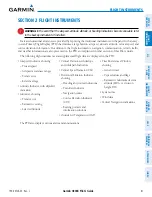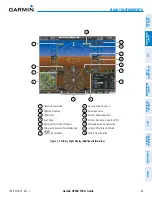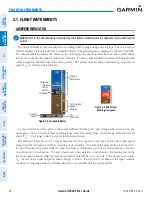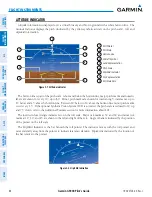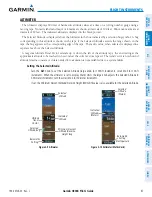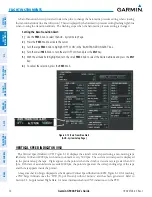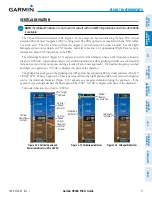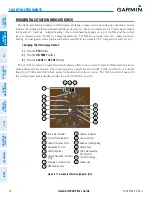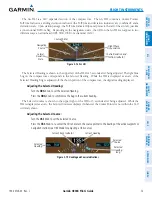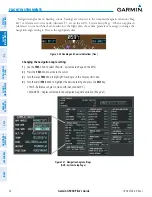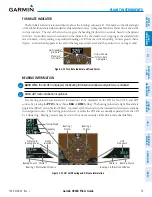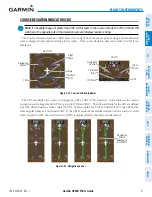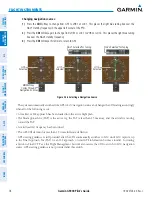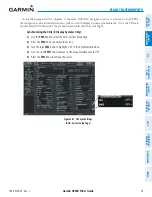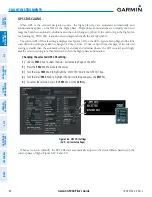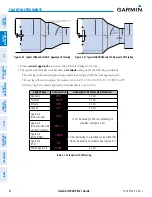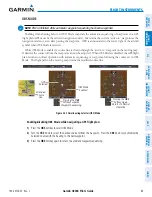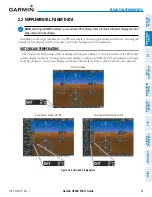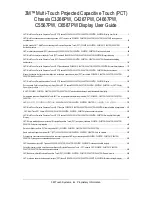
Garmin G900X Pilot’s Guide
190-00726-00 Rev. J
70
FLIGHT INSTRUMENTS
SY
STEM
O
VER
VIEW
FLIGHT
INSTRUMENTS
EIS
AUDIO P
ANEL
& CNS
FLIGHT
MANA
GEMENT
HAZARD
AV
OID
ANCE
AFCS
ADDITIONAL FEA
TURES
APPENDICES
INDEX
A Baro Transition Alert is provided to alert the pilot to change the barometric pressure setting when crossing
the transition altitude (in either direction). This is displayed by the barometric pressure setting flashing light blue
when crossing the transition altitude. The flashing stops when the barometric pressure setting is changed.
Setting the Baro Transition Alert:
1)
Use the
FMS
Knob to select the AUX - System Setup Page.
2)
Press the
FMS
Knob to activate the cursor.
3)
Turn the large
FMS
Knob to highlight ‘OFF or ON’ in the ‘BARO TRANSITION ALERT’ box.
4)
Turn the small
FMS
Knob to turn the alert OFF or ON and press the
ENT
Key.
5)
With the altitude field highlighted, turn the small
FMS
Knob to select the desired altitude and press the
ENT
Key.
6)
To cancel the selection, press the
FMS
Knob.
Figure 2-13 Baro Transition Alert
(AUX - System Setup Page)
VERTICAL SPEED INDICATOR (VSI)
The
Vertical Speed Indicator (VSI, Figure 2-14) displays the aircraft vertical speed using a non-moving tape
labeled at 1000 and 2000 fpm with minor tick marks every 500 fpm. The current vertical speed is displayed
in the pointer along the tape. Digits appear in the pointer when the climb or descent rate is greater than 100
fpm. If the rate of ascent/descent exceeds 2000 fpm, the pointer appears at the corresponding edge of the tape
and the rate appears inside the pointer.
A magenta chevron bug is displayed as the Required Vertical Speed Indication (RVSI; Figure 2-14) for reaching
a VNV Target Altitude once the “TOD [Top of Descent] within 1 minute” alert has been generated. Refer to
Section 2.2, Supplemental Flight Data, for more information about VNV indications on the PFD.






